Enhancing Forensic Science with Spectroscopic Imaging
Chemical imaging with a high spatial resolution offers a unique opportunity for forensic research. For example, approaches that we developed in FTIR spectroscopic imaging are used to analyse samples of forensic interest such as: the surface of human skin (e.g. fingerprints), textiles (e.g. clothing), paper, trace evidence (e.g. in soil), tablets, drugs, fibres, biological samples and biomaterials. Crime scene evidence, for example fingerprints, collected from different surfaces can be analysed using tape-lift method combined with ATR-FTIR imaging (see photos below).

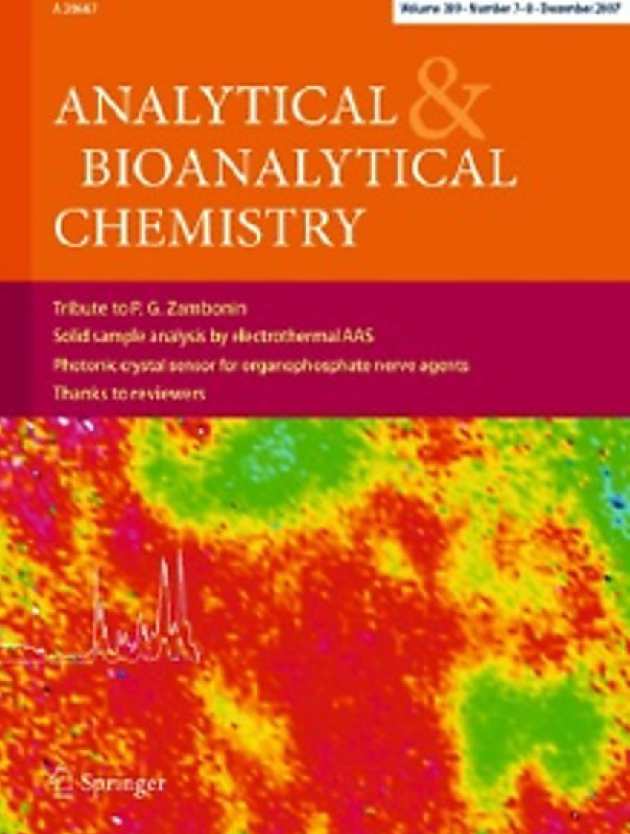
The feasibility research on applications of spectroscopic imaging of forensics was in response to the EPSRC call on ‘Crime Prevention’ and resulted in collaborations with government's organisations and many insitutions.The overall aim of this research was to develop applications of spectroscopic imaging as a powerful new tool with wide applicability for samples of forensic interest. We have developed macro attenuated total reflection (ATR) -FTIR imaging approaches with different fields of view for forensic applications. The developed approaches of rapid chemical imaging analysis of samples with different surface areas (ranging from 50x50 um2 to 1.6 x 2.2 cm2) with enhanced spatial resolution, could be used to analyse the surface of human skin (e.g. finger), textile materials (clothing), paper, trace evidence (e.g. in soil), tablets, drugs, fibres, biological samples and biomaterials. Gunshot residues collected from the surfaces of cartilages or from the surface of a hand can be analysed using the tape-lift method combined with ATR imaging (with Dr. Camilla Ricci, a former Research Associate in our group). Cover image of Analytical and Bioanalytical Chemistry on the left shows chemical image of counterfeit antimalarial tablet analysed with FTIR spectrosocpic imaging in combination with DESI linear ion trap mass spectroscopy (in collaboration with Prof. Facundo Fernandez at Georgia Institute of Technology, Atlanta, USA).
Chemical imaging of fingerprints collected from different surfaces with the aid of gelatine tape ( see series of photos below) has been demonstrated for the first time (Ricci C., Bleay S., Kazarian S. G. “Spectroscopic imaging of latent fingermarks collected with the aid of a gelatine tape” Anal. Chem. 79 (2007) 5771) and caused significant interest from the media and forensic scientists. It was described in Police Professional, the leading magazine for the UK police forces, highlighting the broad practical applications of the research, and in many articles in newspapers and magazines. This led to many presentations, including lecture at the Fingerprint Society annual conference: Conference Schedule . The significant technical development in this research has also been the application of a new ATR accessory with a variable angle of incidence to obtain images of collected fingerprints at different depths. Our research in this area has been described on numerous websites, including MSNBC, Discover Magazine, Photonics Spectra, and by the freelance science journalist, Nadya Anscombe. This ATR-FTIR spectroscopic imaging method has recently been recognised as a specialist forensic method in the Fingermark Visualisation Manual produced by the Home Office in 2014.
As a part of these research activities, the imaging methodology was successfully applied, for the first time, to analyse counterfeit tablets. This research was published in a number of papers and made it to the cover of Analytical and Bioanalytical Chemistry (see below) and featured in the Chemistry World (link). The applications of ATR-FTIR spectroscopic imaging to forensic science is an exciting piece of step-change characterisation science with very broad applications in forensic investigations.
See our most recent review article on this topic: Ewing A. V, Kazarian S. G. Infrared spectroscopy and spectroscopic imaging in forensic science Analyst (2017) 142, 257-272. (doi)
Analysing fingerprints with ATR-FTIR spectroscopic imaging
Fingerprints can be collected or lifted from surfaces using gelatin tape which can be analysed using ATR-FTIR spectroscopic imaging. The chemical signature of the fingerprint can be obtained in a non-destructive, label-free manner and the spatial distribution of various components can be plotted to give the shape of the fingerprint, and reveal trace particles.
This methodology has been included in the Fingermark Visualisation Manual published by the Home Office Centre for Applied Science and Technology (CAST) (link).
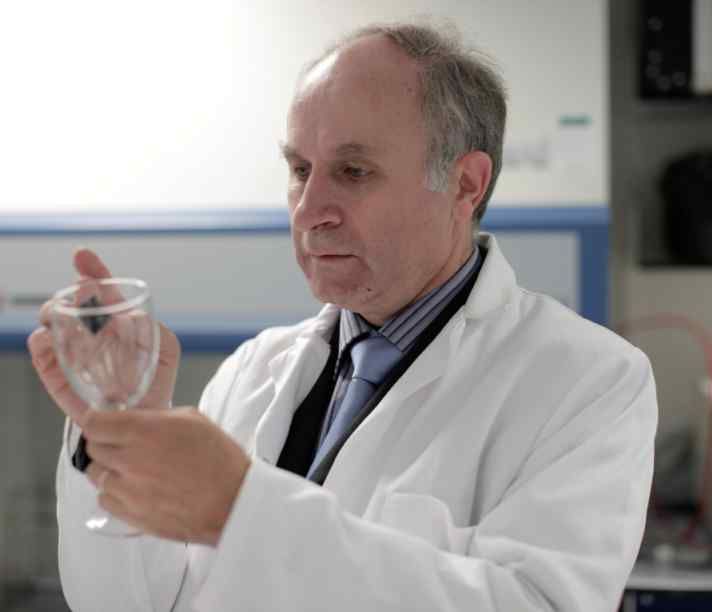
Lifting a fingerprint
Fingerprints can be lifted from surfaces using gelatine tape
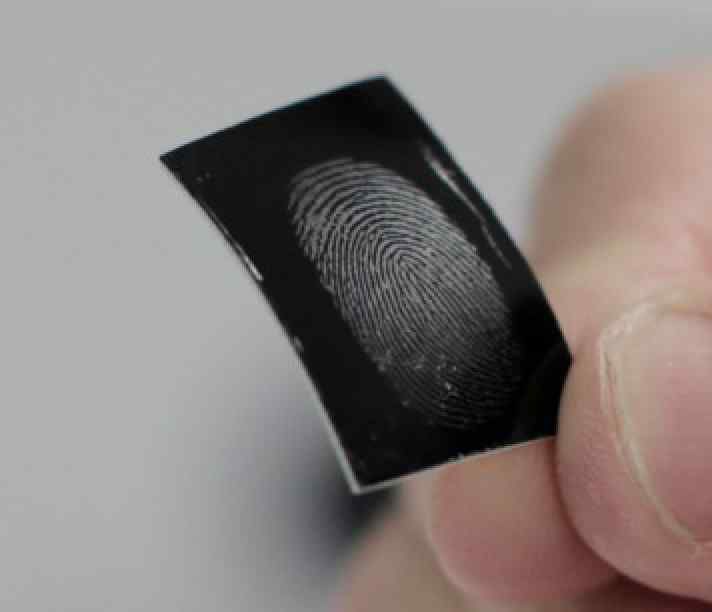
Fingerprint on gelatin tape
A fingerprint collected from a surface can be visible on the gelatin tape
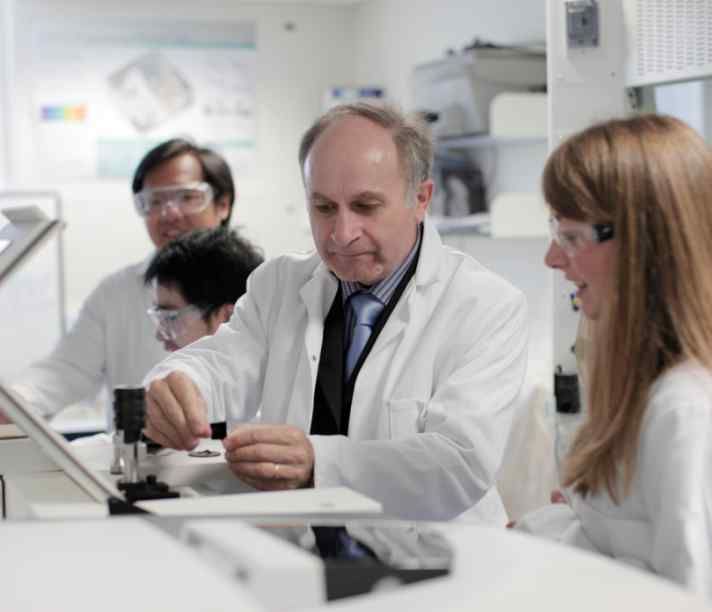
Studying fingerprints with an FTIR spectrometer
Collected fingerprints can be studied using an infrared spectrometer with a focal plane array detector

Depositing fingerprint on the ATR crystal
Gelatin tape with a latent fingerprint can be placed on the surface of an ATR crystal where spectroscopic images can be acquired
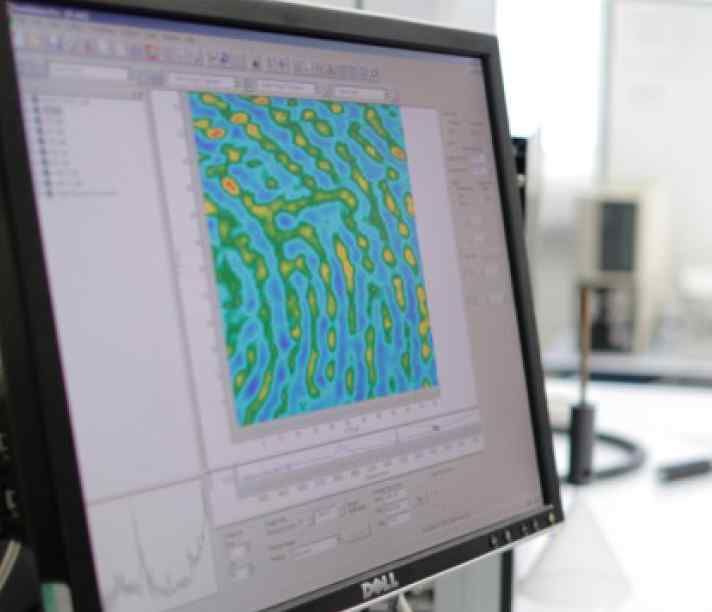
Spectroscopic image of a fingerprint
Plotting the spatial distribution of the intensity of spectral bands which correspond to lipids, features of the fingerprint can be revealed

Prof. Sergei Kazarian
Prof. Sergei Kazarian is the PI of this project, funded by EPSRC grant (EP/C532678) "Enhancing Forensic Science with Spectroscopic Imaging"
Key References
- Ewing A. V, Kazarian S. G. Infrared spectroscopy and spectroscopic imaging in forensic science Analyst (2017) i142, 257-272.(doi)
- Ricci C., Kazarian S. G. Collection and Detection of Latent Fingermarks Contaminated with Cosmetics on Non-porous and Porous Surfaces, Surface and Interface Analysis 42 (2010) 386-392.
- Bailey M. J, Bright N. J., Croxton R. S., FranceseS., Ferguson L. S., HinderS. Jickells S., Jones B. J., Jones B. N., Kazarian S. G., OjedaJ. J., Webb, R. P., Wolstenholme R., Bleay S. Chemical Characterisation of Latent Fingerprints by MALDI, ToF-SIMS, MeV-SIMS, GC-MS, XPS and ATR-FTIR Spectroscopic Imaging – an Intercomparison Analytical Chemistry 84 (2012) 8514-8523 (doi)
- Ricci C., Chan K. L. A., Kazarian S. G. Combining Tape-Lift Method and Fourier Transform Infrared Spectroscopic Imaging for Forensic Applications, Applied Spectroscopy 60 (2006) 1013-1021.
- Ricci C., Bleay S., Kazarian S. G. Spectroscopic imaging of latent fingermarks collected with the aid of a gelatine tape, Analytical Chemistry 79 (2007) 5771-5776.(doi)
- Ricci, C., Phiriyavityopas, P., Curum, N., Chan, K. L. A., Jickells, S., Kazarian, S. G., Chemical Imaging of Latent Fingerprint Residues, Applied Spectroscopy, 61 (2007) 514-522 (doi)
- Ricci C, Nyadong L., Fernandez F.M., Newton P.N., Kazarian S.G., Combined Fourier Transform Infrared Imaging and Desorption Electrospray Ionization Linear Ion Trap Mass Spectrometry for the Analysis of Counterfeit Antimalarial Tablets. Anal. Bioanal. Chem. 387 (2007) 551-559.
- Ricci C., Eliasson C., Macleod N. A., Newton P. N., Matousek P., Kazarian S. G. Characterization of Genuine and Fake Artesunate Anti-malarial Tablets Using Fourier Transform Infrared Imaging and Spatially Offset Raman spectroscopy Through Blister Packs, Anal. Bional. Chem. 389 (2007) 1525-1532.
- Ricci C., Nyadong L., Yang, F., Fernandez F. M., Brown C. D., Newton P. N., Kazarian S. G. "Validation of handheld Raman instrumentation for in situ screening for potentially-counterfeit artesunate antimalarial tablets by FT-Raman spectroscopy and direct ionization mass spectrometry." Anal. Chim. Acta 623 (2008)178-186.
-
Kazarian S. G. Invited lecture “Chemical imaging of fingerprints”, Annual Meeting of the Fingerprint Society, England, 2011